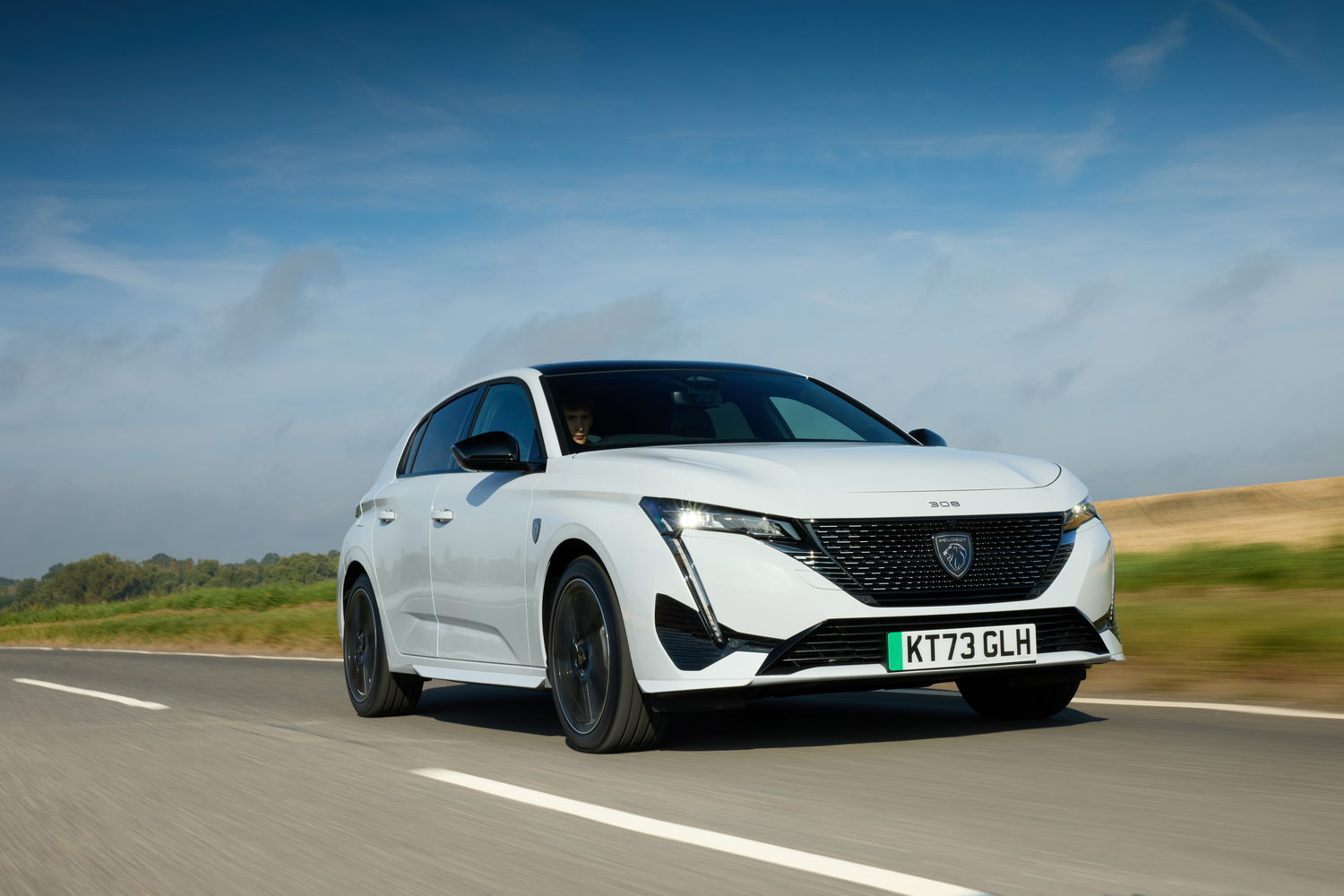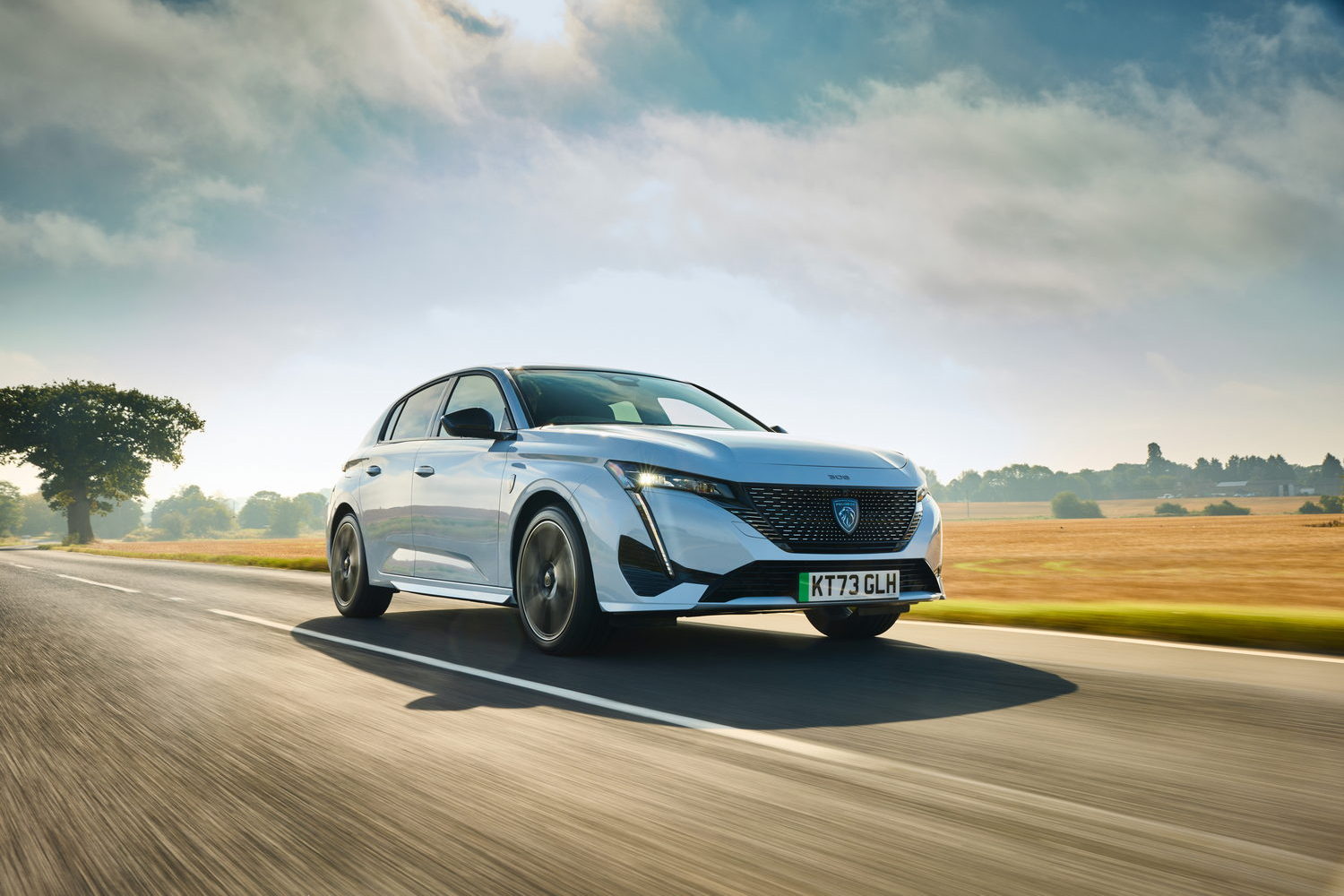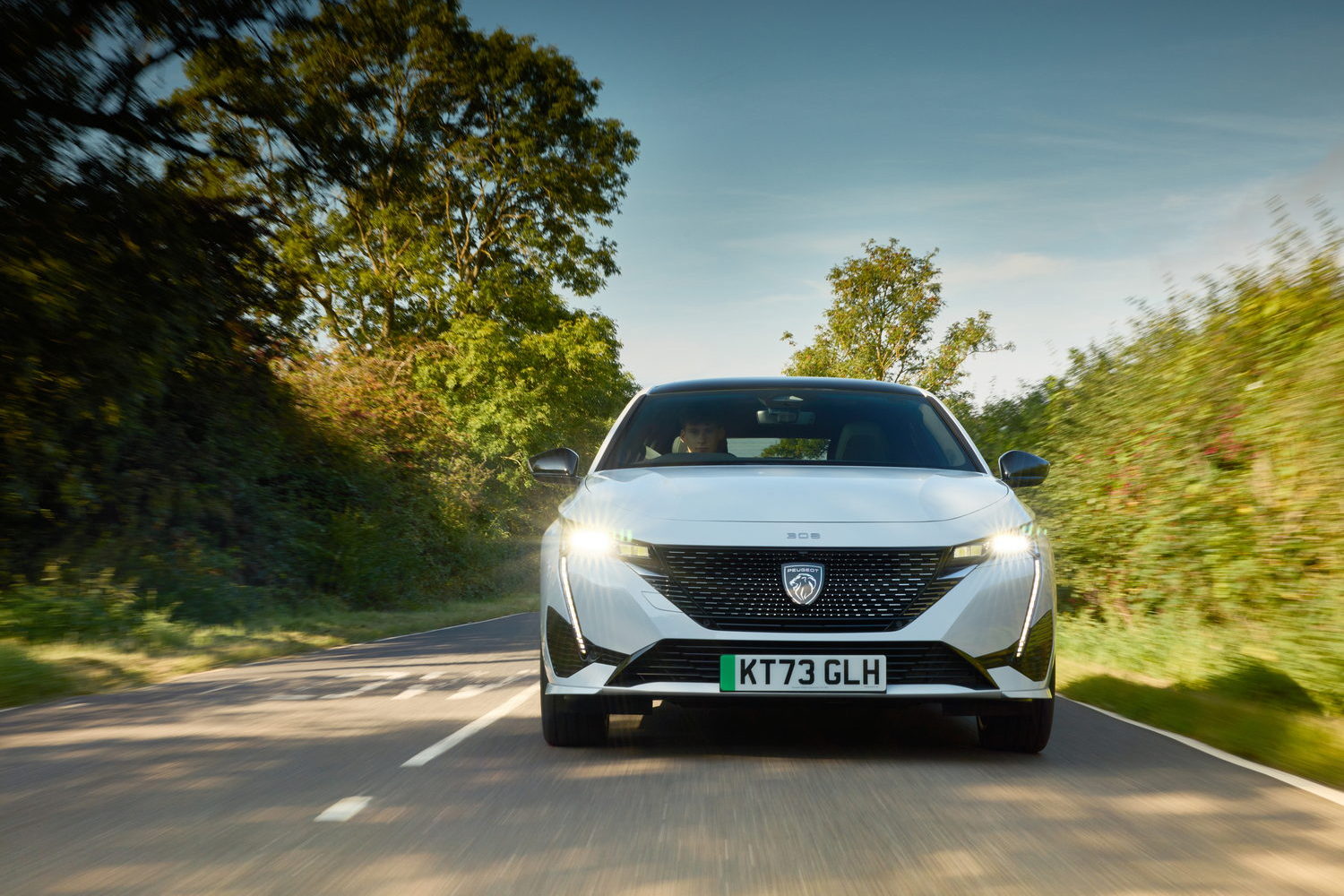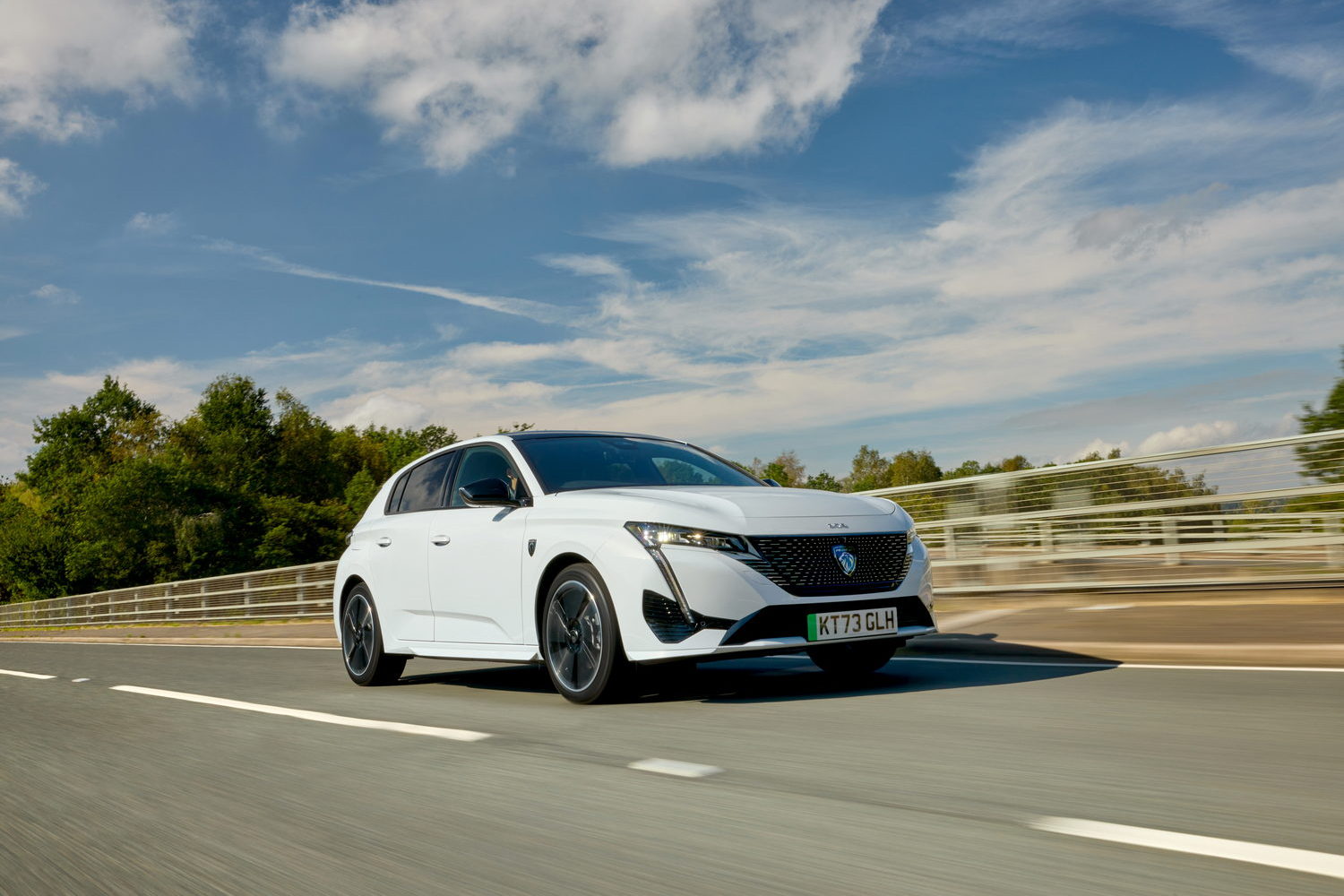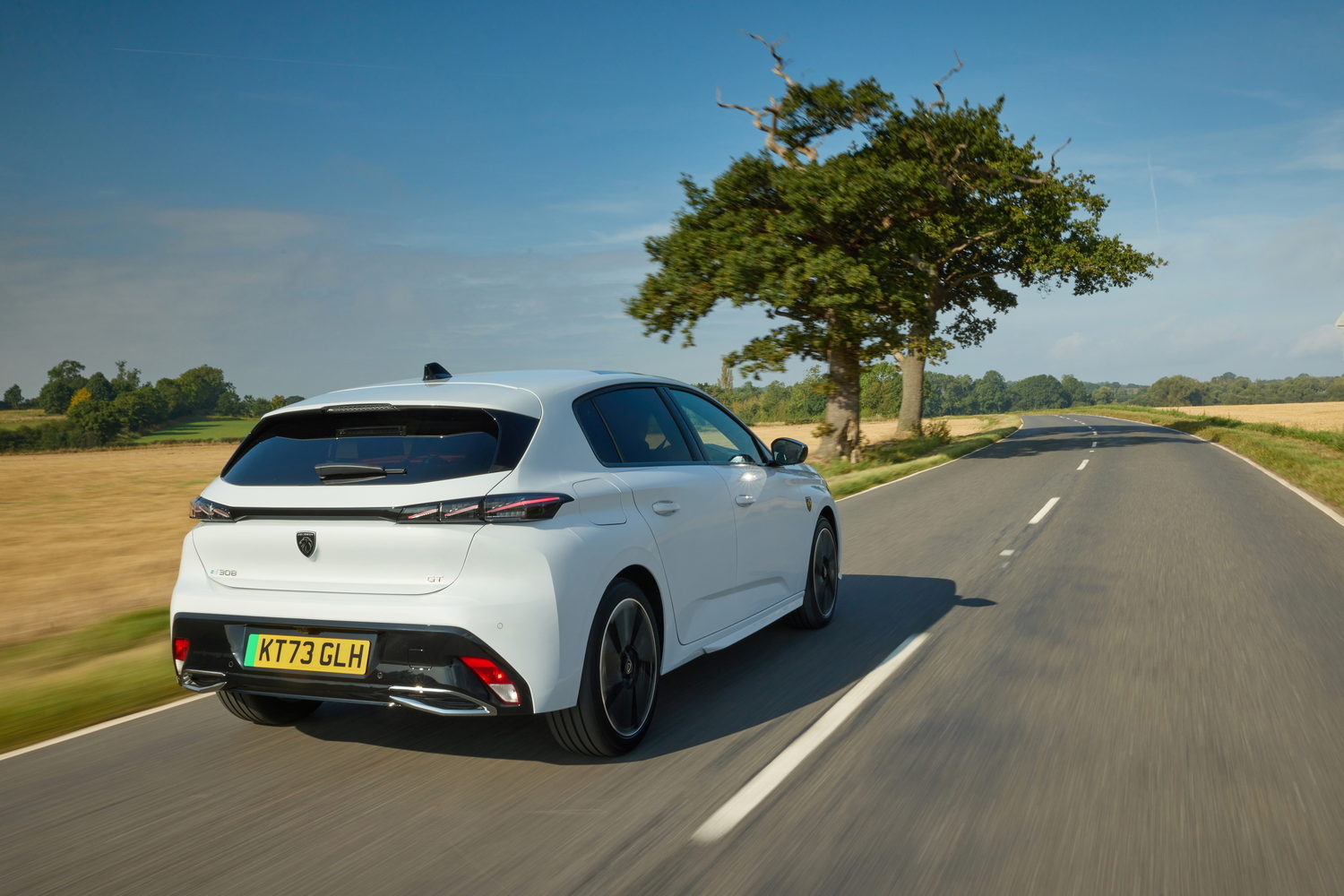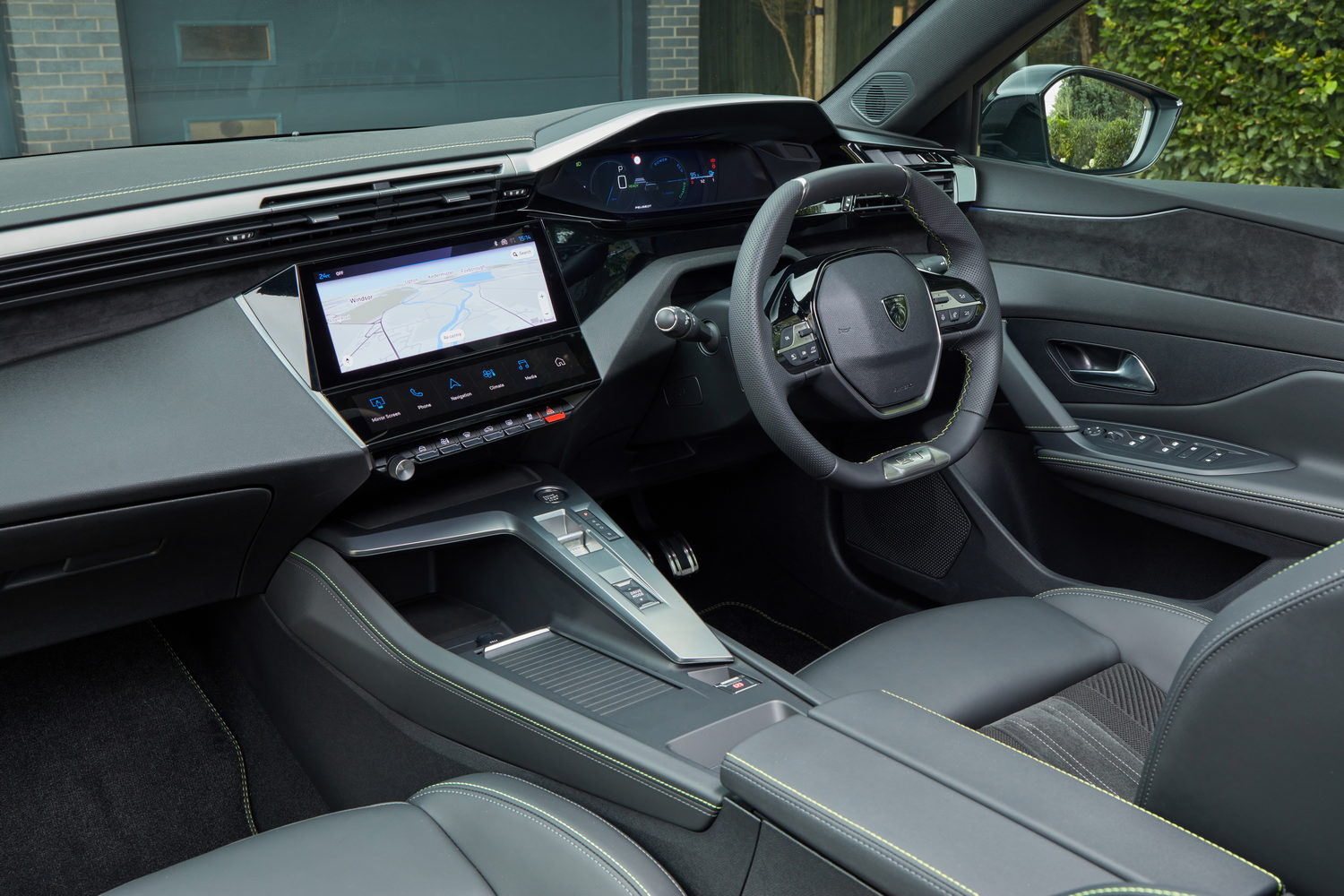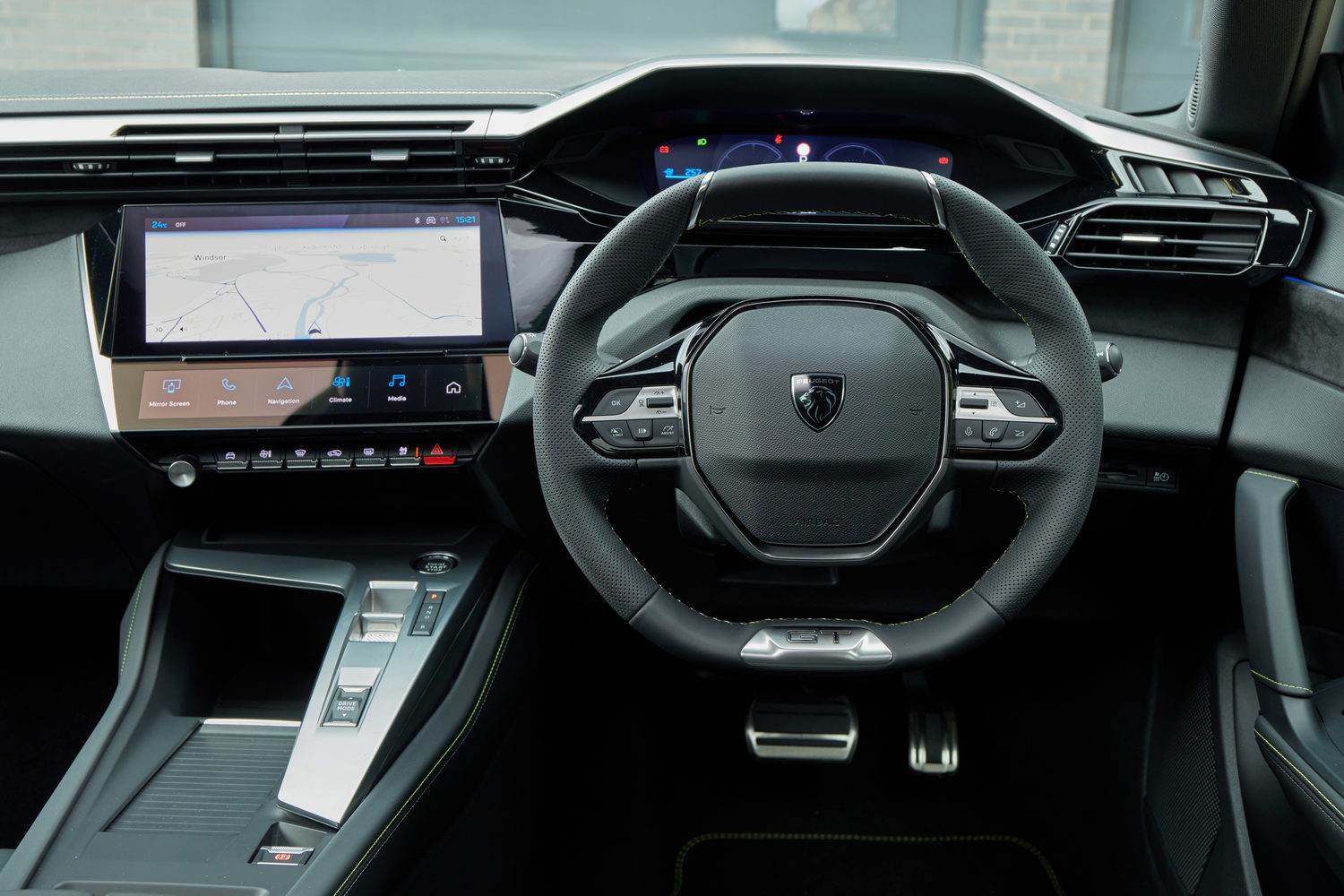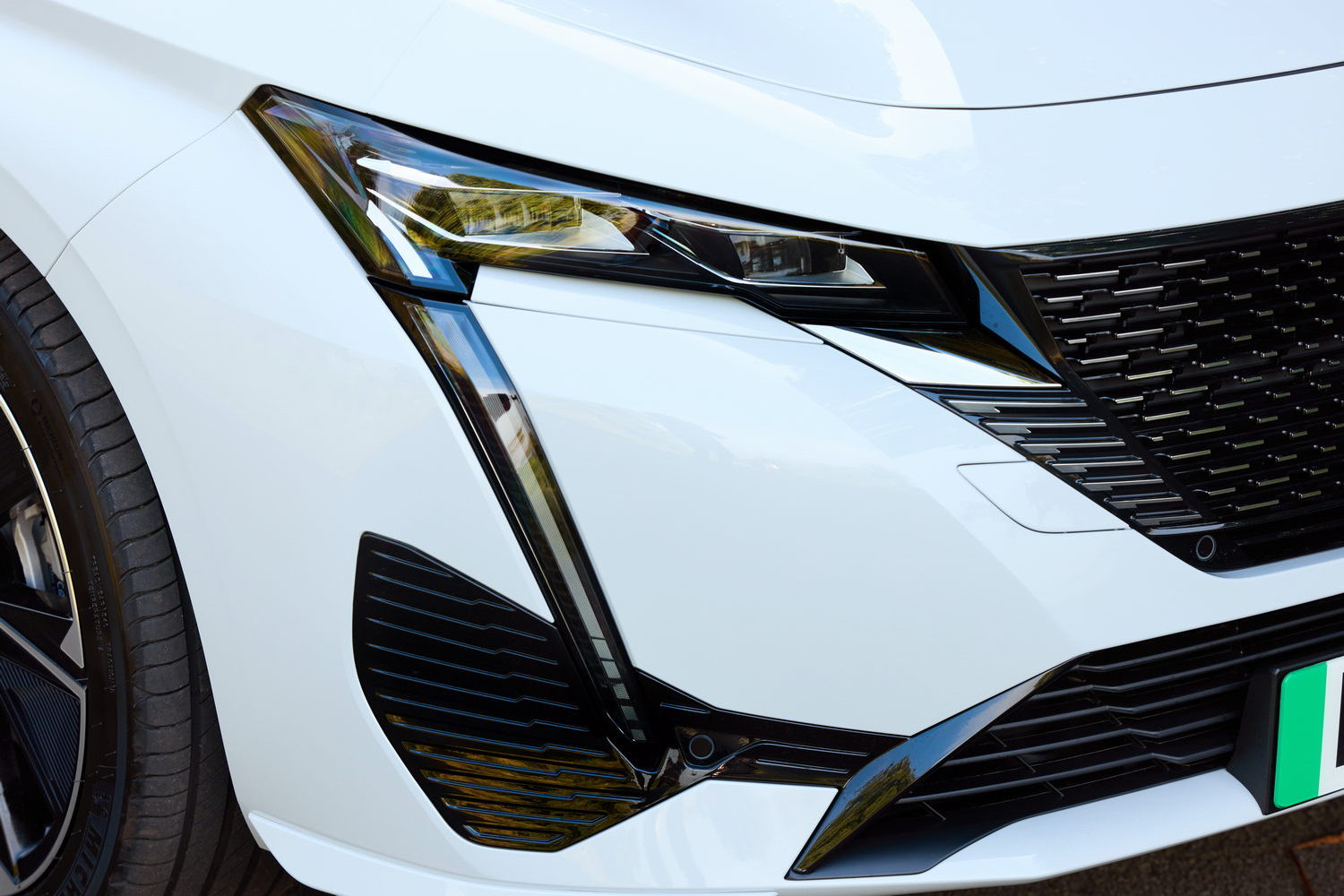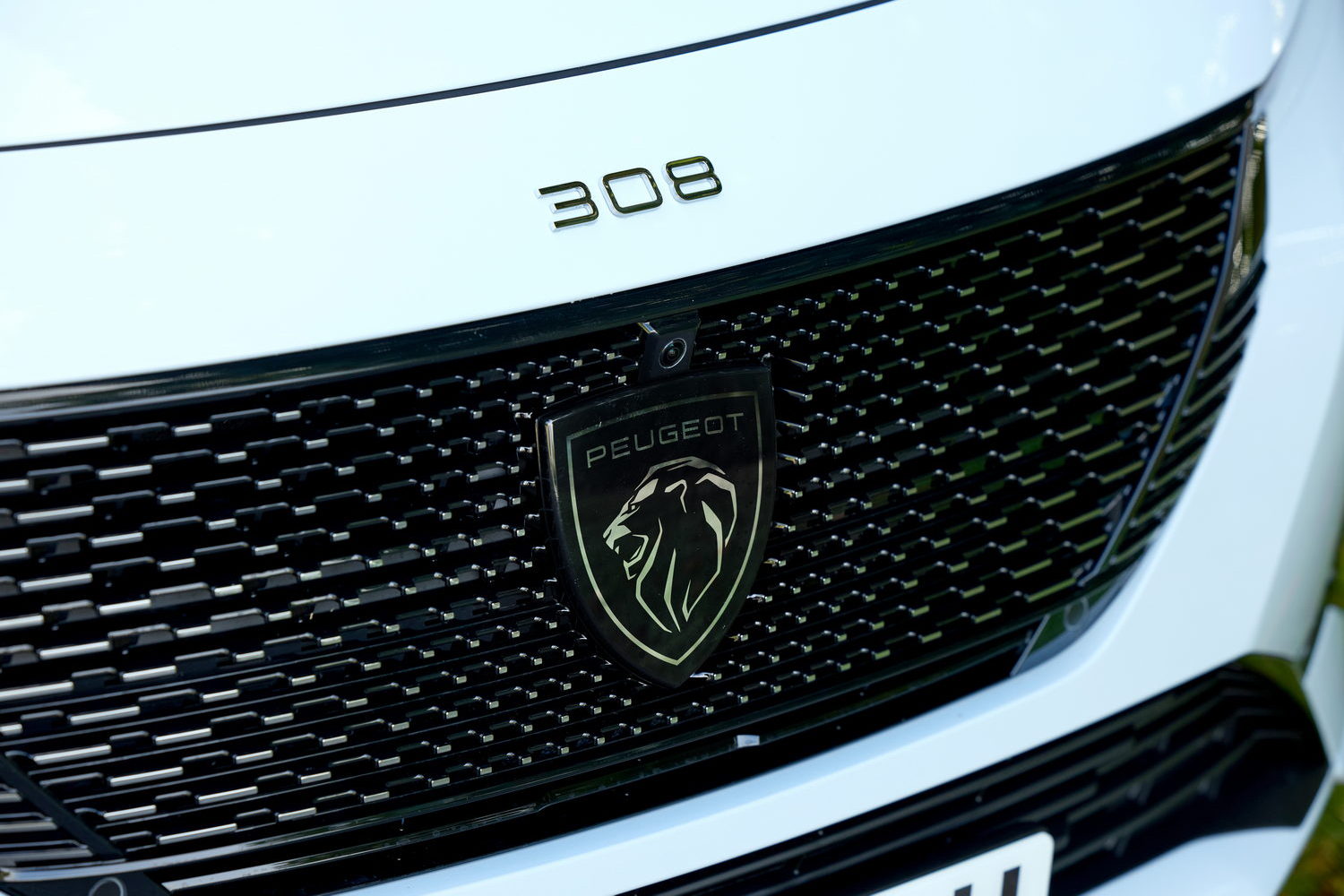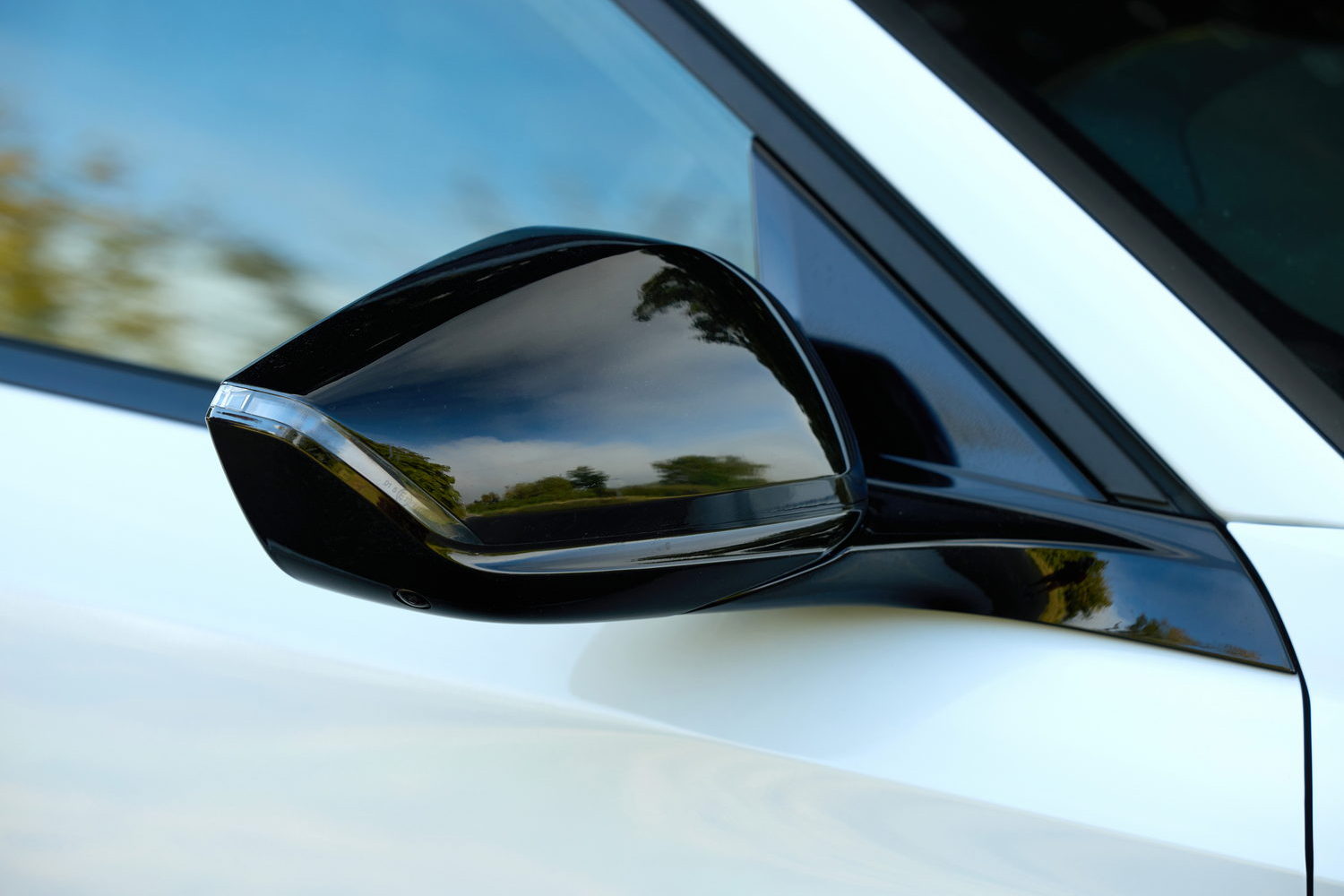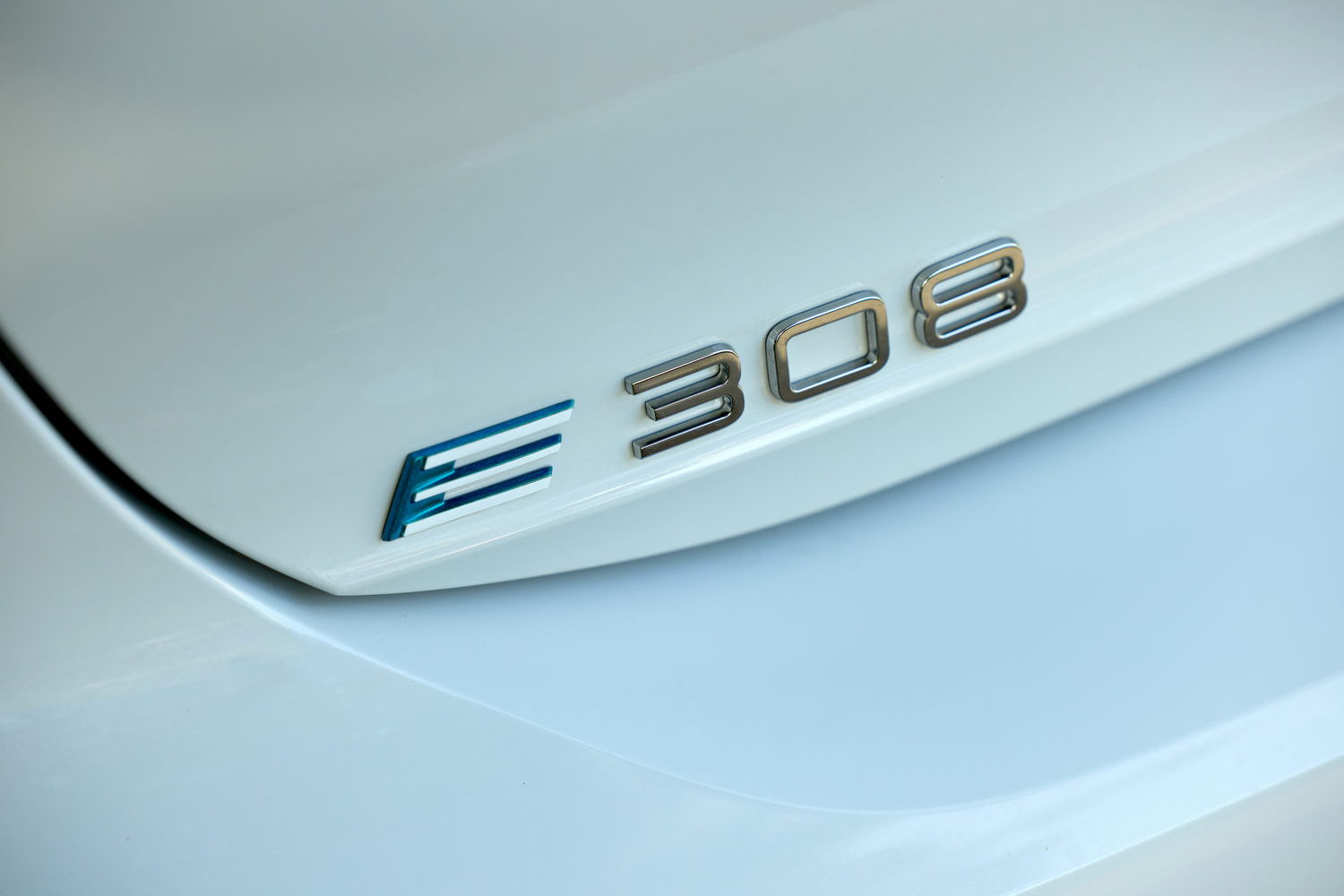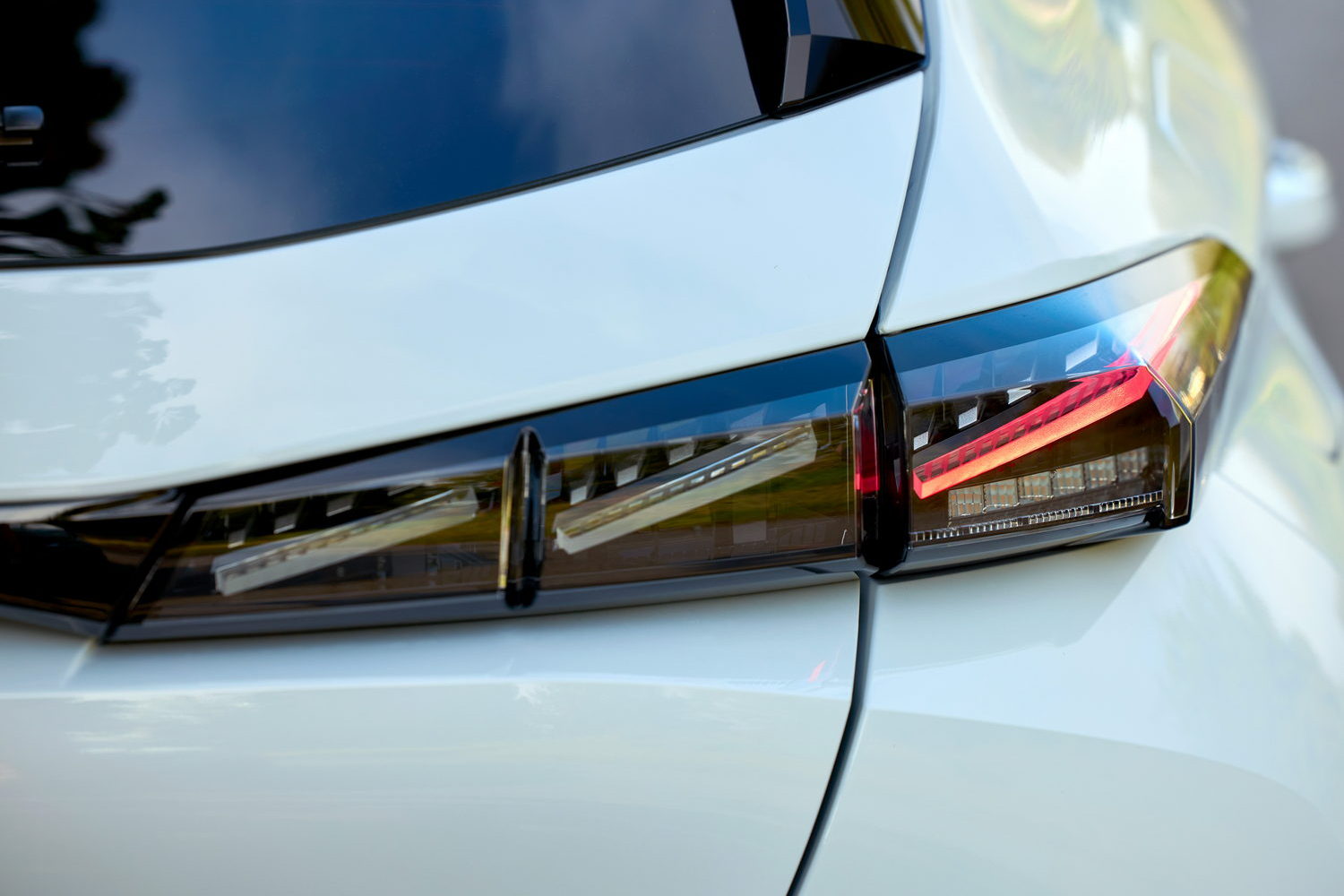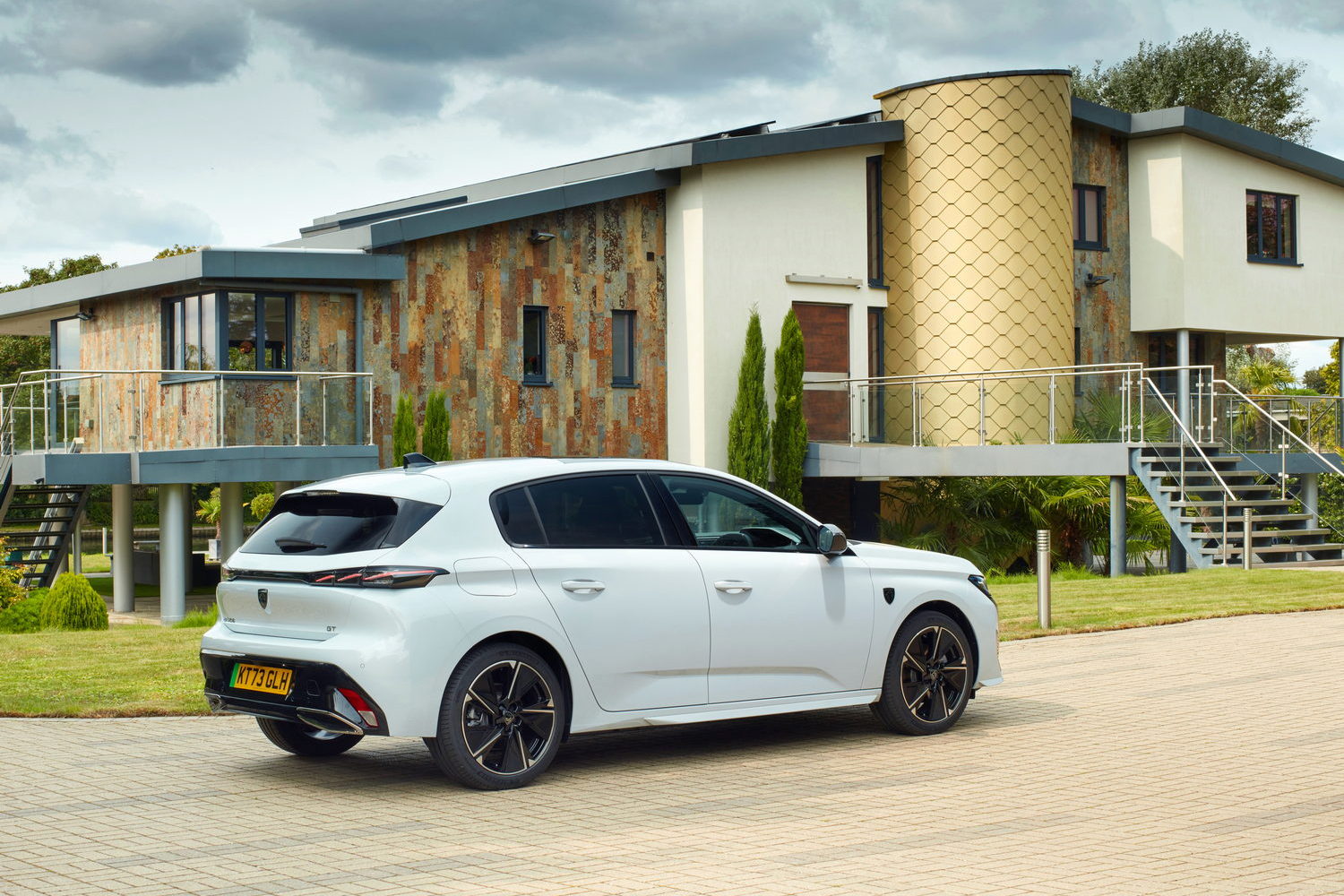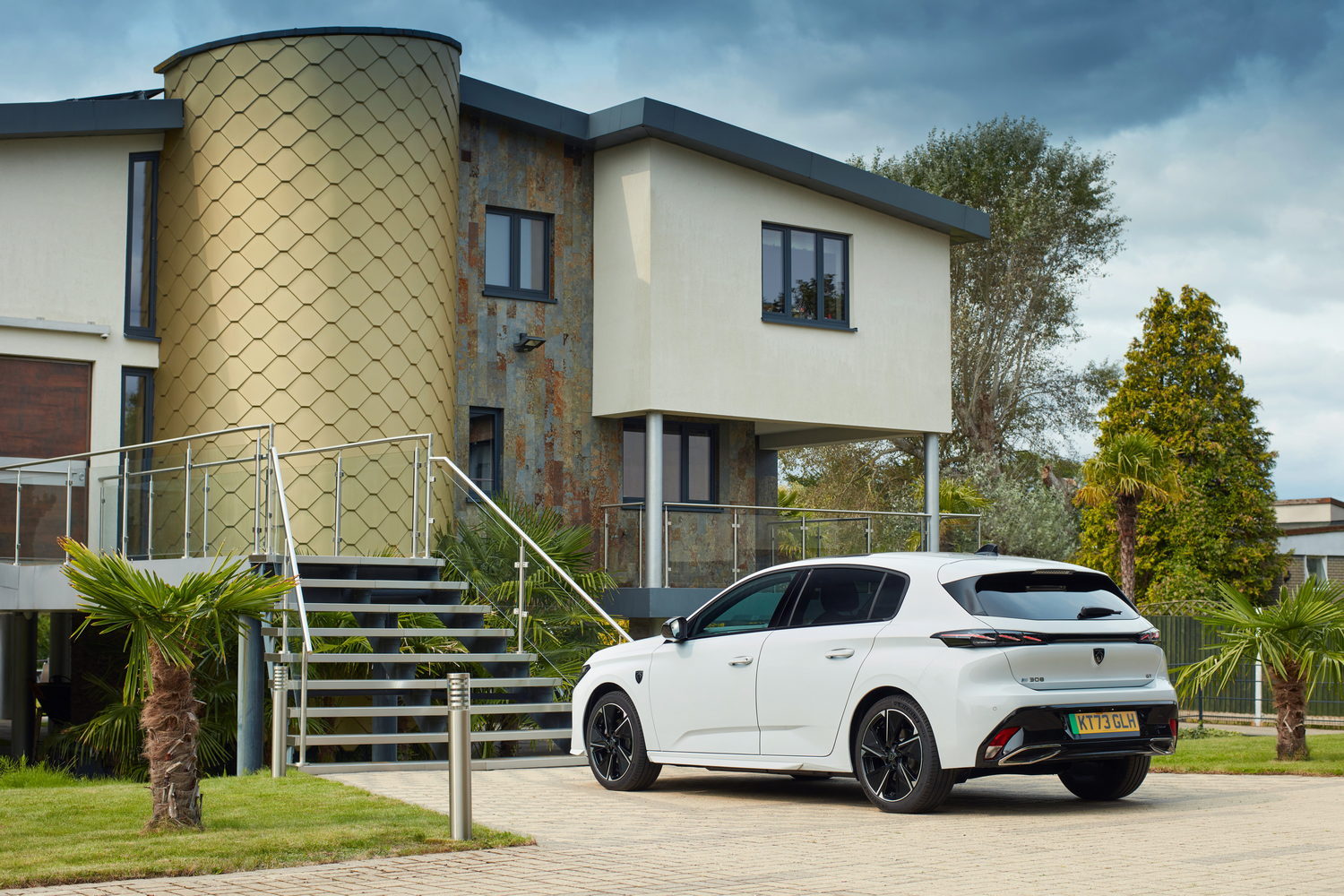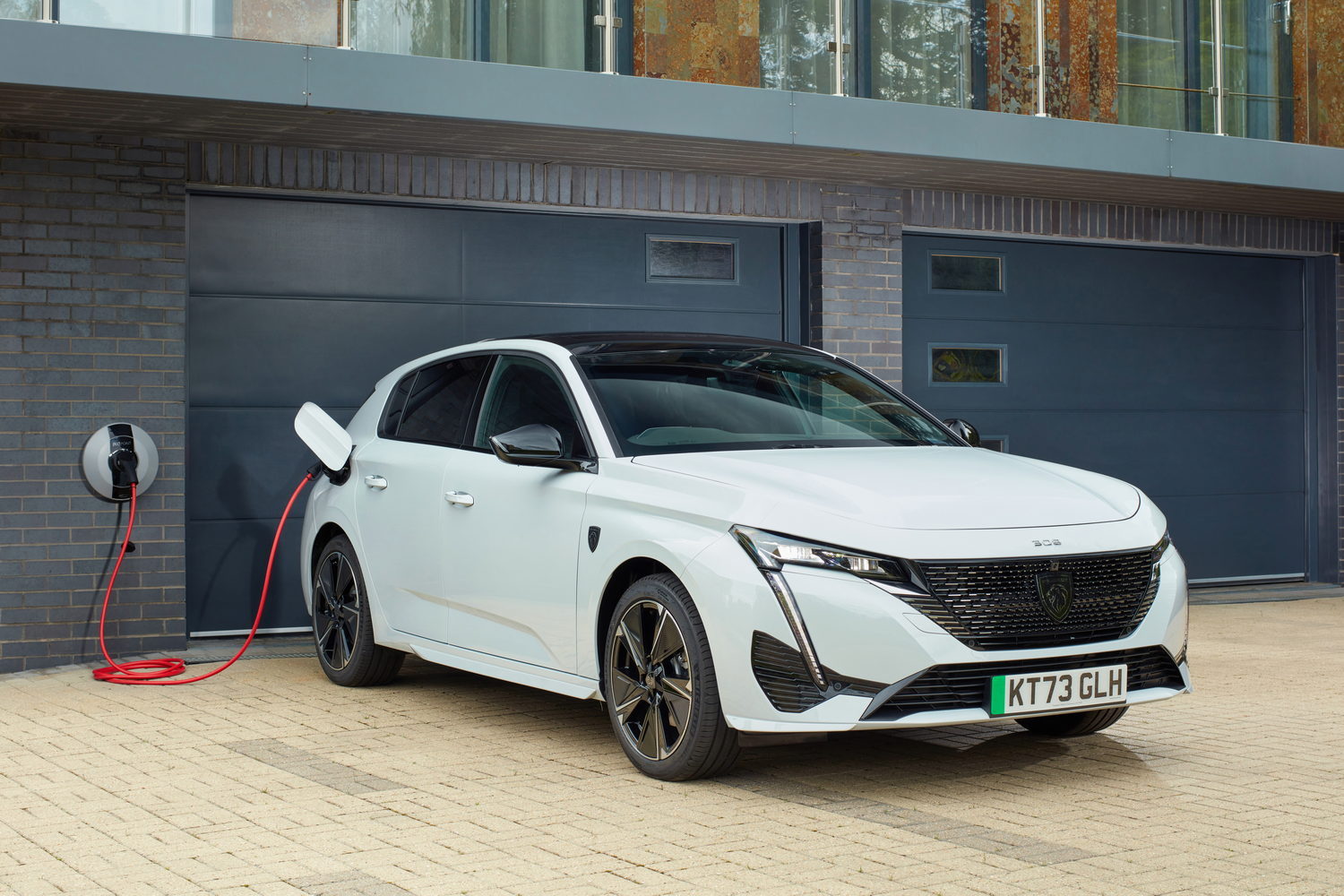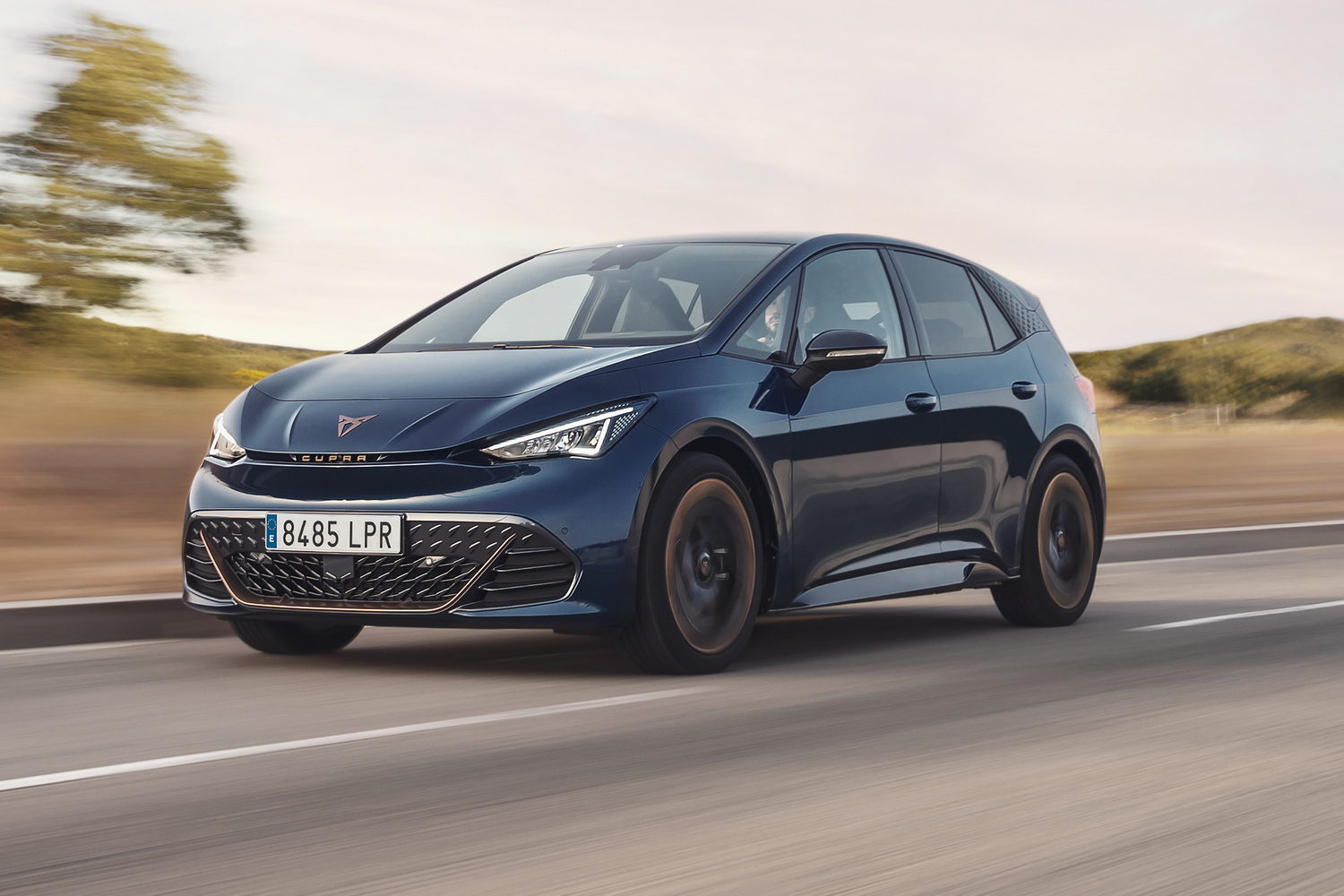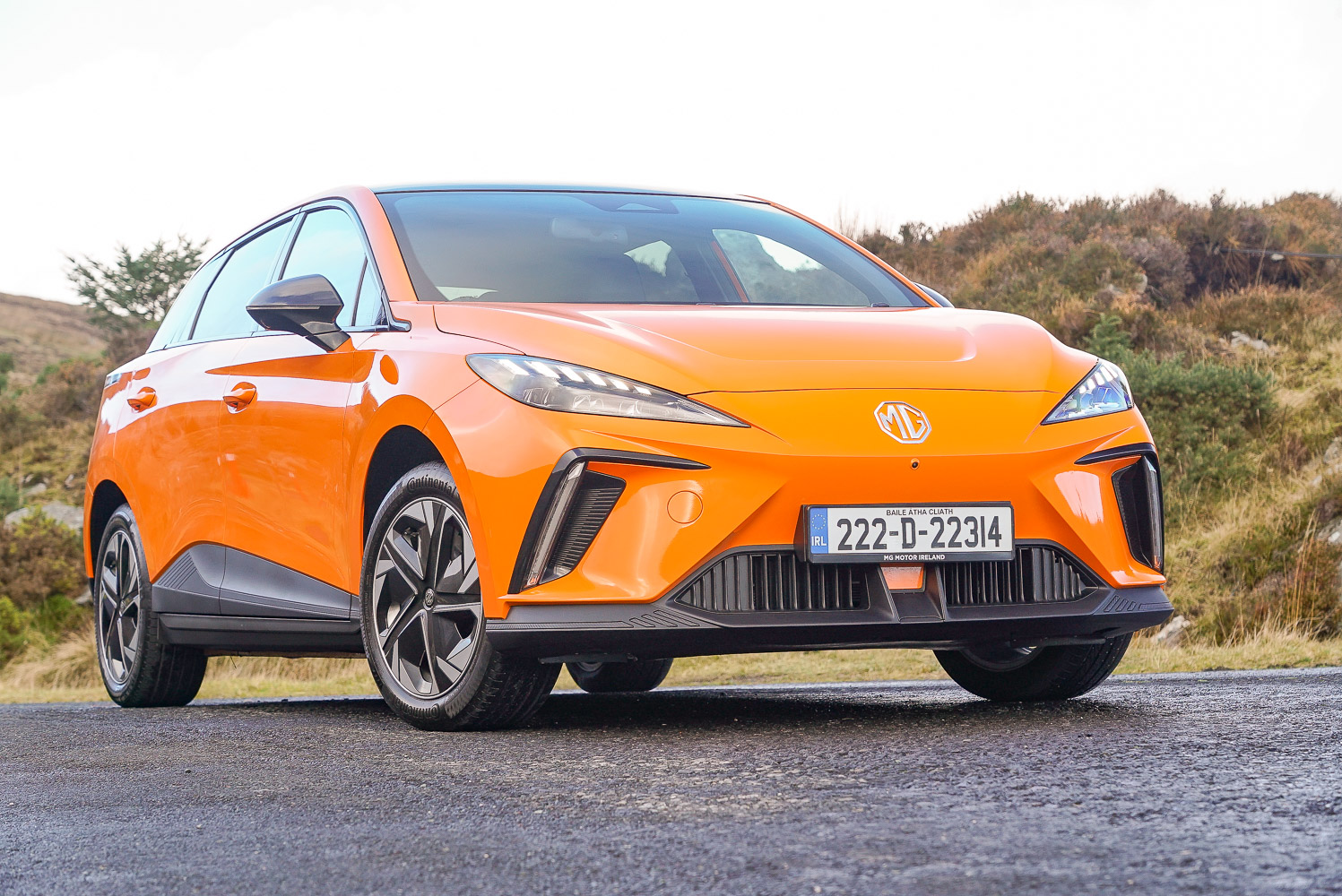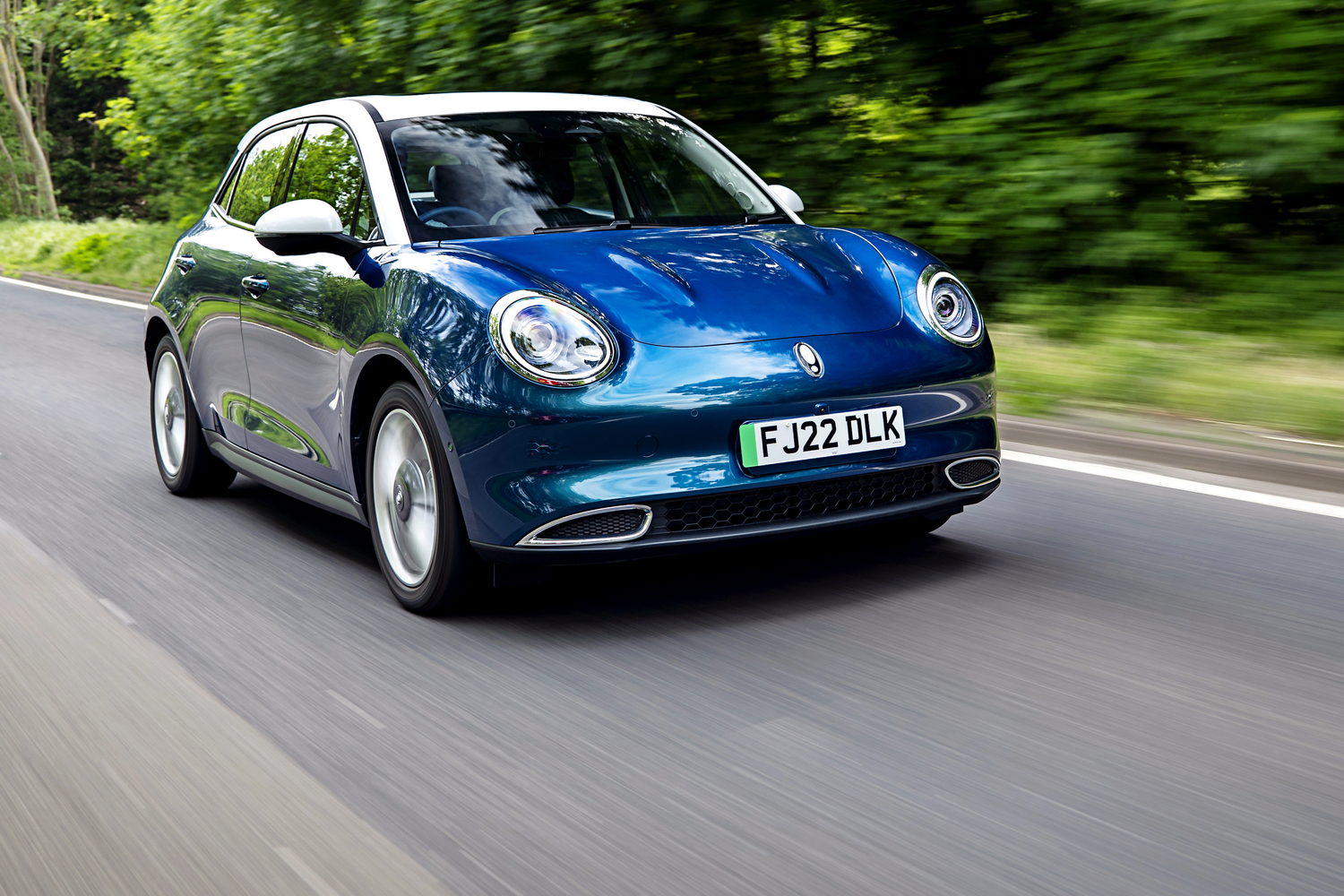Peugeot, like so many manufacturers, is on a drive to become an all-electric car company by the turn of the decade, and after the success of its all-electric E-208 and E-2008 pioneers, it is now expanding the zero-emission technology to other model lines that previously used internal combustion or hybrid power only. The latest recipient of this treatment is the 308 family hatchback, with the resulting E-308 model due to compete with the likes of the Volkswagen ID.3, MG4, Cupra Born, Nissan Leaf and more, so it's time to find out if the electric Peugeot vaults straight to the top of the class.
In the metal
If you're familiar with the current-generation Peugeot 308 hatchback, then the E-308 derivative is going to hold no visual surprises for you. When Peugeot started doing electric cars a few years back, it would put small 'e' badges in lots of places on the body, while also giving its zero-emission models dichromatic badges and grilles to further differentiate them.
However, presumably in a process of normalising electric cars, the only difference between this electric 308 and a petrol-, diesel- or plug-in-hybrid-powered version nowadays is an 'E-308' logo on the rear hatch - yes, the company is now going with a capital 'E', rather than a lower-case one - and, if you pick the model with them specified, a bespoke design of 18-inch alloy called the 'Ottawa' that is engineered to have lower aerodynamic drag.
No matter; as the 308 is a handsome enough hatchback anyway, this same-old approach to the E-308's aesthetics is welcome.
Moving inside, it's more of the same story. The E-308 has the familiar i-Cockpit arrangement inside, which means a small and low steering wheel beneath a high digital instrument cluster - measuring ten inches across the diagonal - a central ten-inch high-def touchscreen for the i-Connect infotainment system and a generally very pleasing standard of fit and finish. The electric version has a dedicated screen in the i-Connect system, which shows things like energy flow, energy recovery (during regenerative braking), consumption and charging stats, along with functions such as delaying the charge time of the car. There's also a 'B' step to the toggle gear selector to increase the car's level of regen-braking while on the move.
Otherwise, it's as you were compared to the normal 308 line, the only other change to note being that the E-308 - like the plug-in hybrid models - has a smaller boot than the petrol and diesel models. Where they have 412 litres of cargo capacity with all seats in use, and up to 1,323 litres with the second row folded away, the E-308's corresponding figures are 361 and 1,271 litres. Still, that remains a acceptable-enough size for a hatchback of this build, irrespective of its propulsion type, and if you need any more stowage then there's a further 34 litres of cubby holes and the like that you can take advantage of in the E-308's cabin.
Driving it
The Peugeot E-308 uses a platform that underpins pretty much anything electric in the whole Stellantis group - which includes the likes of Citroen, DS, Fiat, Alfa Romeo, Jeep, Opel and more. The chassis of the EV is called the eCMP2, and the E-308 uses the latest battery-and-motor combination.
That means a 54kWh gross, 51kWh usable battery pack in the E-308, hooked up to a 115kW (156hp) electric motor powering the front wheels. Peugeot is quoting a one-shot driving range of up to 414km on the WLTP cycle for E-308s fitted with smaller alloy wheels, while grander-specification cars on larger rims see a marginal reduction in that figure to 411km.
The maximum recharging rate is 100kW DC - so a 10-80 per cent charge ought to take around 29 minutes - while three-phase 11kW AC charging is fitted to the E-308 as standard. At that rate, the E-308's battery can go from 0-100 per cent charge in five hours 45 minutes. A more typical 7.4kWh domestic wallbox does the same replenishment job in eight hours.
To counter the fact that the E-308 is larger than other Peugeots using the same gear, namely the E-208 electric supermini and E-2008 crossover, the only real change to the powertrain is a modest 10Nm uplift in peak torque, to 270Nm for the E-308. Like all applications of this 115kW motor, to access its full 156hp you need the car in Sport mode; otherwise, it'll be making 100kW (136hp), maximum. The kerb weight of the E-308 is 1,684kg, for reference of what that motor is having to pull - presumably why the Peugeot has a 0-100km/h on-paper time that's eight-tenths tardier than some of its relations, with a quoted 9.8-second run.
Oddly, once you're out on the move in the E-308, the power levels do not feel blunted by the car's mass. In fact, this Peugeot electric hatch is most pleasing to drive. The performance is about bang on the money for a car of this class and remit, so while you never get that sort of huge-torque shove you get from, well, huge-torque EVs, the E-308 is adequately brisk and scurries into traffic flow with no dramas whatsoever. It has good modulation of the accelerator too, provided you avoid Eco mode where the right-hand pedal goes all fuzzy and dim-witted, while acoustic isolation in the cabin is also exceptional - better than on the more affordable E-208 and E-2008 models certainly, and so you won't really notice anything of external noise contributors, whether you're plodding around urban areas or accelerating the Peugeot quickly on an open road.
The ride's good, too, the firmer underlying notes to its character a direct corollary of Peugeot's 'sporty' brand ethos - the E-308 has to corner and handle better than, say, the Citroen e-C4 which is broadly the same car, as the latter focuses on comfort over speed. Yet the Peugeot's comportment never becomes actively uncomfortable; you notice little details here and there about what the big alloy wheels are encountering in terms of the road surface, but you're not acutely aware of large bangs and thumps making their way into the cabin, as the suspension is not only smooth and controlled, but crucially quiet too.
As to the handling, the E-308 is pretty spry for something weighing in at 1.7 tonnes, but we wouldn't go so far as to say this is an environmental saint with warm-hatch aspirations. The steering is good, weighty and reasonably informative (especially in Sport mode), and there's grip aplenty from the Peugeot's wide tyres. But to suggest threading the E-308 along a twisting rural road is approaching anything like driving excitement would be misleading. It's assured, capable, composed - but rarely thrilling. Mind, a car like this doesn't need to really set the keener driver's pants on fire, so maybe the E-308's unflustered handling manners are just about perfect for its target market.
What you get for your money
Peugeot hasn't confirmed Irish prices for the E-308 as yet. The 308 hatchback range already begins at €31,765 for an Active 1.2 PureTech petrol. For an idea on the eventual prices of the E-308, it might be worth taking the 180hp plug-in hybrid 308 as a better steer; that costs €43,685 as an Active, €45,745 as an Allure and €50,845 in range-topping GT specification. It's very likely that the E-308, for all its 0g/km emissions helping it through our nefarious taxation system, will be closer in monetary value to the hybrid models than the petrol and diesels. It's also possible that the E-308 will not be available in Active specification, instead kicking off as a better-equipped Allure - all of which means it won't be exactly cheap, in the wider scheme of hatchbacks. As soon as we have more details and numbers in this regard, we'll update this section of the review.
Summary
An unsurprising move by Peugeot to add electric power to the 308 family, the execution of the E-308 is as accomplished as you'd expect of a company which has been honing its EV formula for a good three years now. What you have here is all the things that make the 308 hatchback such a good car in the first place, only enhanced with the commendable aspects of a zero-emission electric car. The E-308 doesn't sacrifice much in terms of interior practicality or driving capabilities to its relations, so the only big question is going to relate to its price once it is eventually confirmed. If that's acceptable, then if you're after a deeply talented family electric vehicle, the E-308 is most assuredly deserving of your consideration.

